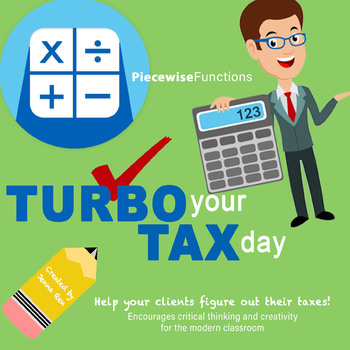Piecewise Functions Tax Day Project and Lab
- Zip
Description
Constructing and using piecewise functions is fun and engaging in this tax challenge. In this project students will learn about the basics of taxable income and deductions. Then they'll take on the role of a tax consultant to help their clients, Stan Lobs, Laura Lindy, and the Mula couple make sense of their tax forms. Each client falls into a different tax bracket and require the use of a piecewise function to determine their refund. Read W-2s, write refund checks, and learn how to interpret tax rates.
This two-three day project is a great finale for a function unit or a tax day lab. High school students of all levels will benefit from the application of tax rates and will enjoy the real life situations presented by their clients.
An editable file is included so that you can make adjustments to the assignment. An answer key and directions are included.
Thanks for your review and feedback!





